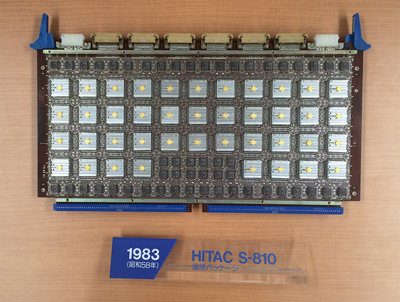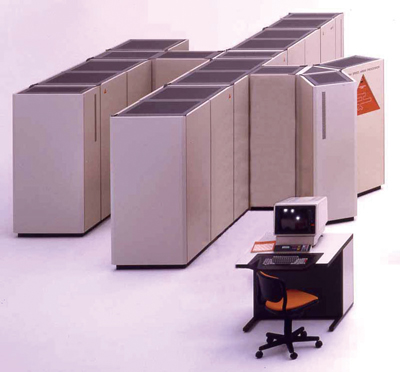

- Home >
- Artifacts of IP Heritage >
- 2015 >
- HITAC S-810 Logic Package
HITAC S-810 Logic Package


| Manufactured in | 1983 |
|---|---|
| Manufactured by | Hitachi, Ltd. |
| Owner | Hitachi, Ltd. |
| Location of historical materials | Hitachi, Ltd. 292, Yoshidacho, Totsuka-ku, Yokohama-shi, Kanagawa-ken, 244-0817 Japan |
| Visitor information | Not open to the public (Ask for a visit) |
| Contact | https://www.hitachi.co.jp/products/it/portal/museum/ |
The HITAC S-810, announced by Hitachi in August 1982, was Japan's first full-fledged supercomputer to be completed and delivered. The supercomputer delivered the world’s fastest performance at the time of 630 million operations per second. This speed was the result of many technologies, such as parallel pipeline arithmetic processing — in which multiple computing elements operated in parallel, 256 words x 32 high-capacity vector registers, a main memory capacity of up to 256 MB, and parallel main memory access. The S-810's 83 types of vector arithmetic instructions enabled high-speed calculations and a much larger range of vector processes compared to previous Integrated Array Processors. The supercomputer used logic LSIs with speeds of 0.35 ns from 550-gate chips and 0.45 ns from 1,500-gate chips. It also used highly integrated hybrid modules, with 1 kilobit of bipolar RAM with an access speed of 4.5 ns for the vector registers and static RAM with an access speed of 40 ns for the main memory. The S-810 incorporated the M Series' architecture to ensure the same ease-of-use as previous general-purpose systems, with such features as a time-sharing system function and a central management function. The supercomputer was widely employed by users at the cutting edge of science and technology, especially at research institutions. The first machine was delivered to the Computer Centre of the University of Tokyo in October 1983.
